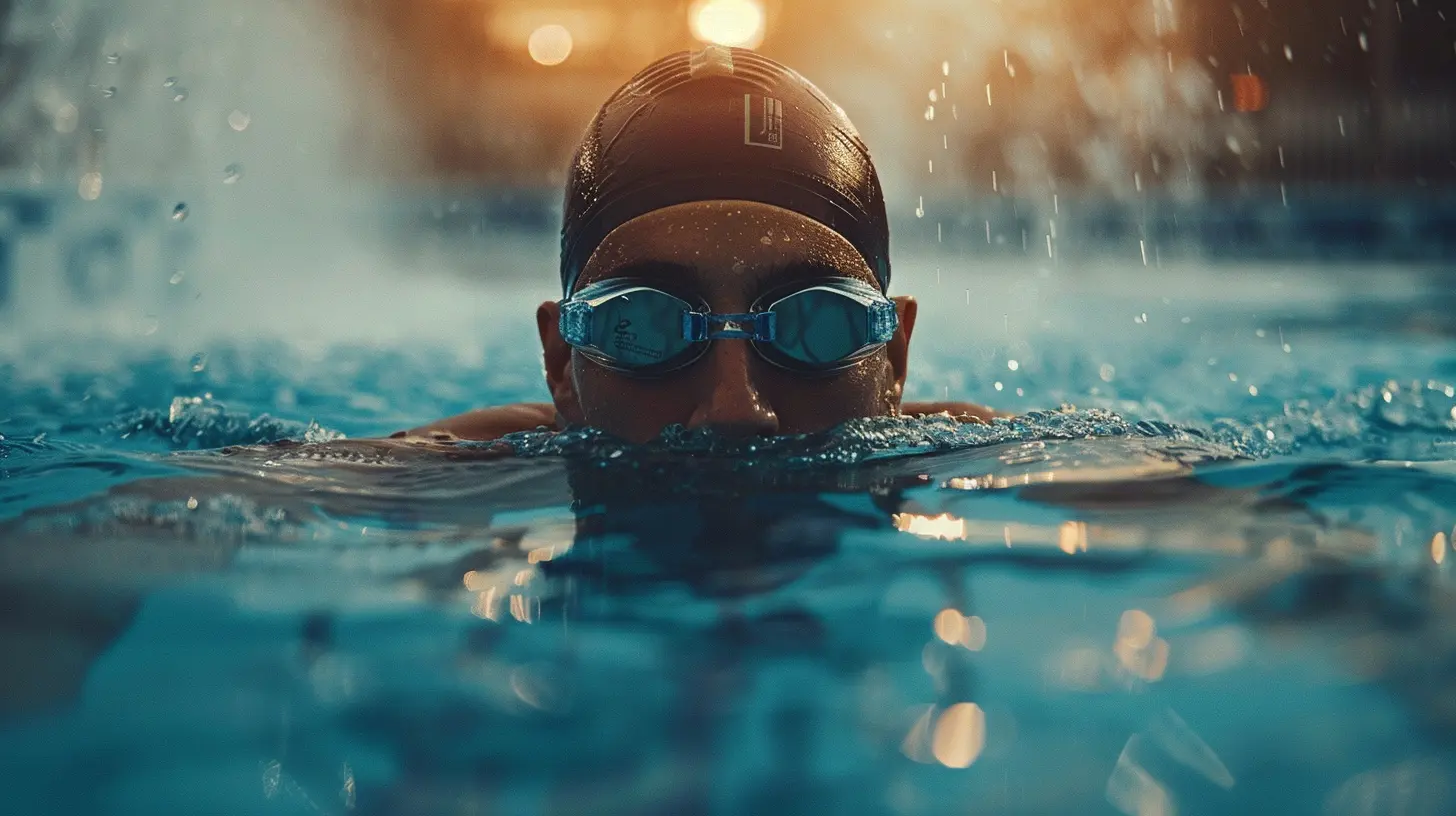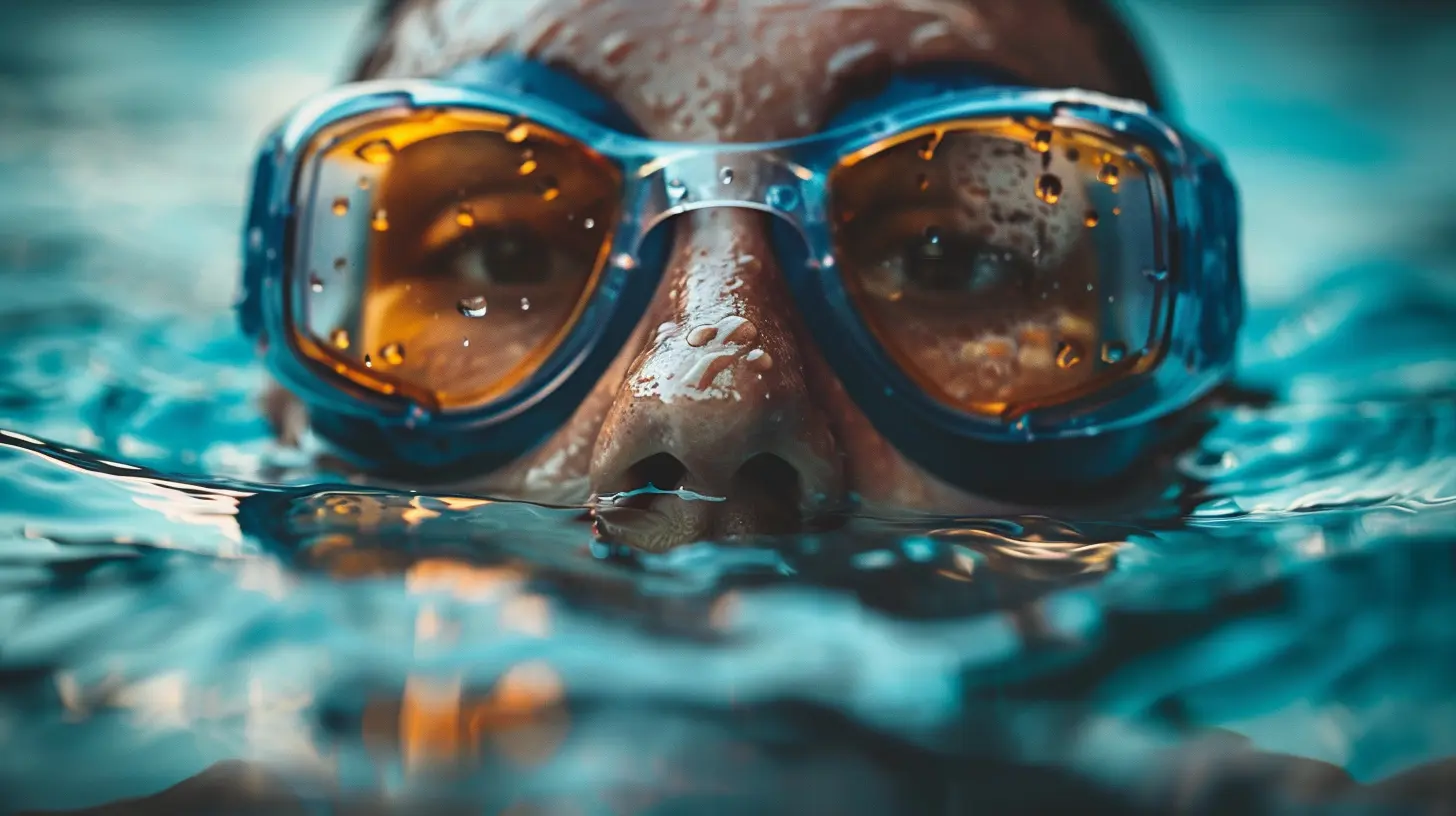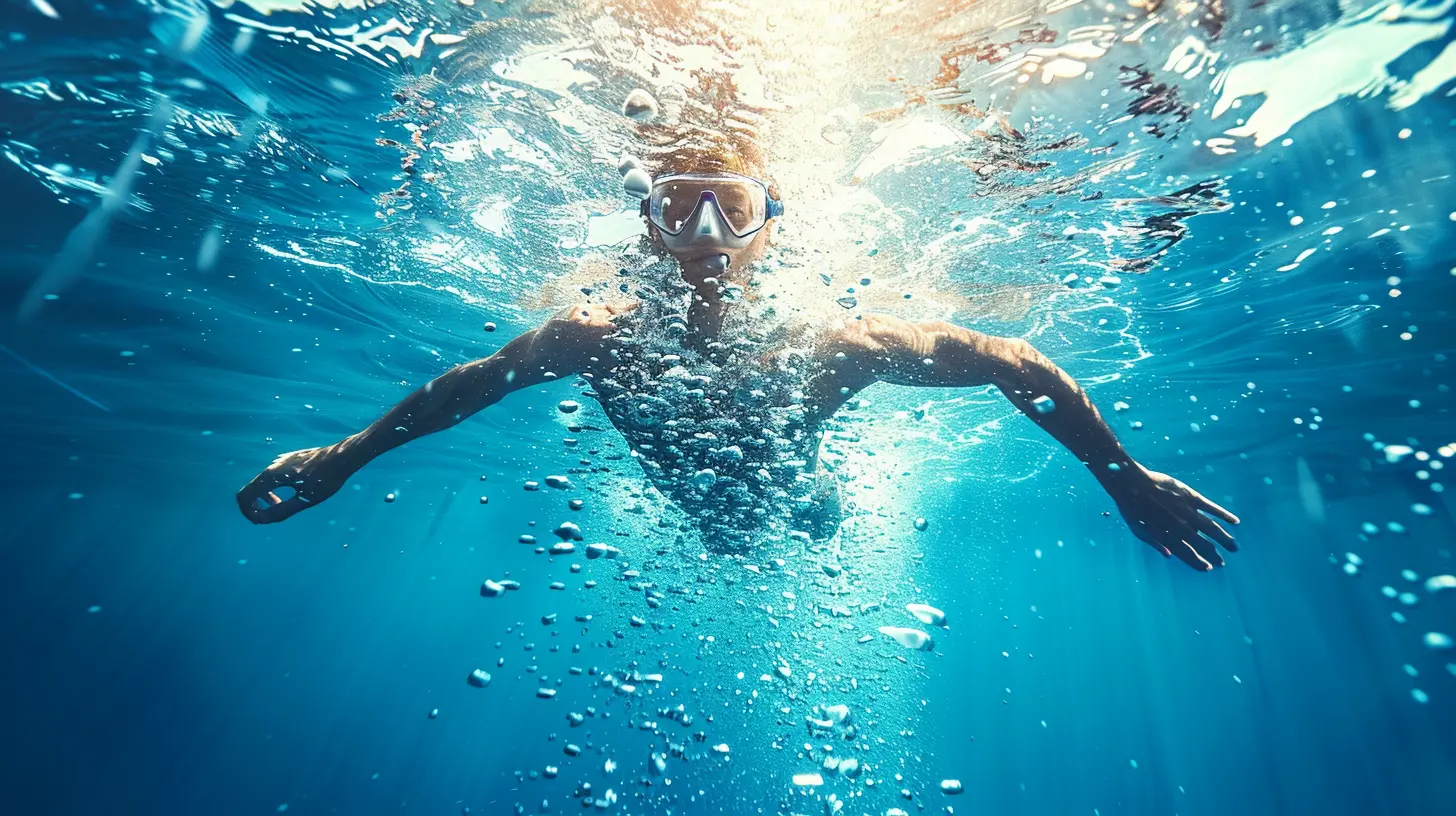Debunking Common Myths About Swimming
1 June 2025
Swimming is one of those sports that people have strong opinions about, whether they're seasoned swimmers or haven't set foot in a pool since high school gym class. It’s a full-body workout, a way to relax, and even a life-saving skill. Yet, despite its widespread popularity, several myths and misconceptions about swimming persist. These myths can discourage people from taking the plunge (pun intended) or even lead to unsafe practices.
So, let’s dive in (okay, last pun, I promise) and debunk some of the most common myths about swimming.
Myth 1: Swimming Alone Will Help You Lose a Lot of Weight
You’ve probably heard someone say that swimming is a great way to shed pounds. While it's true that swimming is a fantastic workout, relying on it as your sole method of weight loss isn’t as straightforward as it seems.The Truth:
Swimming burns calories, no doubt about it—roughly 400-600 calories per hour, depending on your intensity. But here's the kicker: the cold water of the pool can make your body conserve fat as a response to the lower temperature. Your body thinks, "Hey, it’s cold out here! Better hold on to this extra layer of fat to stay warm!" This can sometimes slow down your weight-loss journey compared to other high-impact activities like running or cycling.That being said, swimming is still a great exercise, especially for toning muscles, improving cardiovascular health, and increasing endurance. Just don’t expect it to melt away the pounds without any other lifestyle changes. A balanced diet and a varied exercise routine will get you to your goals faster.
Myth 2: You Have to Be Young to Be Good at Swimming
Some people think that swimming is a young person’s game, and that if you didn’t start early, there’s no point in trying now.The Truth:
This couldn’t be further from reality! Swimming is actually one of the few sports where age doesn’t necessarily put you at a disadvantage. In fact, many people start swimming later in life and still become excellent swimmers. Swimming is low-impact, which means it’s easier on your joints, making it perfect for older adults who want to stay fit without putting unnecessary strain on their bodies.Take a look at some professional swimmers who have competed well into their 30s and even 40s. Dara Torres, an American swimmer, won a silver medal at the age of 41 in the 2008 Olympics. So yeah, age is just a number when it comes to swimming!
Myth 3: You Can’t Swim After Eating
This one is a classic. How many times have you been told to wait 30 minutes to an hour after eating before jumping into the pool? The idea is that if you swim too soon, you might get cramps and drown. Yikes, right?The Truth:
There’s no scientific basis for this myth, and it’s been debunked repeatedly. While it is true that digestion requires blood flow, it doesn’t divert enough blood away from your muscles to prevent you from swimming safely. The worst-case scenario after eating is that you might feel a bit sluggish or experience mild discomfort—kind of like how you feel after a big Thanksgiving dinner. But the idea that you’ll cramp up and sink like a stone? Pure fiction.That being said, it’s still wise to listen to your body. If you’ve just had a huge meal, maybe give yourself a little time to digest before doing an intense swim workout. But if you've only had a light snack, don’t worry about it—swim away!
Myth 4: Swimming Only Works Your Arms and Legs
Since swimming is a sport that involves moving your arms and legs a lot, it’s easy to assume that those are the only parts of your body getting a workout. But that’s selling swimming seriously short.The Truth:
Swimming is a full-body workout, plain and simple. You’re not just working your arms and legs; you’re engaging your core, back, and even your glutes. In fact, your core plays a major role in keeping your body aligned and cutting through the water efficiently.Different strokes target different muscle groups. Freestyle and backstroke are great for your arms, shoulders, and core, while breaststroke and butterfly engage your chest, legs, and core even more intensely. So, if you’re looking for a workout that hits all the major muscle groups, swimming is definitely the way to go.
Myth 5: You Can’t Get Sunburned While Swimming
This myth seems to come from the misconception that water acts as a shield from the sun. Many people think that because they’re in the water, they’re safe from harmful UV rays. But the reality is a little different.The Truth:
Water can actually amplify sun exposure! Not only does water reflect sunlight, but it also washes away sunscreen if you're not using a water-resistant formula. This means that you’re at risk of getting sunburned even faster while swimming, especially if you’re in an outdoor pool or swimming in the ocean.To protect yourself, make sure to apply a waterproof sunscreen with a high SPF about 15-30 minutes before you get in the water. And don’t forget to reapply every couple of hours, especially if you’re swimming for long periods.
Myth 6: You Have to Be a Fast Swimmer to Reap the Benefits
Many people think that if you're not swimming at a competitive pace, you're not really getting a good workout. This can discourage casual swimmers or beginners from sticking with the sport.The Truth:
Speed isn’t everything when it comes to swimming. Even at a slow pace, swimming offers numerous health benefits. Whether you're doing laps or just treading water, you're still engaging your muscles, improving your cardiovascular health, and burning calories.Swimming at a slower pace can be particularly beneficial for beginners because it allows you to focus on technique and form, which are crucial for long-term improvement. So, don’t worry about how fast or slow you’re going—just keep moving!
Myth 7: Chlorine Kills All the Germs in the Pool
This one is often used as an excuse for less-than-stellar hygiene habits. “The chlorine will take care of it,” people say as they skip the pre-swim shower or let their kids jump in without wiping off the dirt from the playground.The Truth:
While chlorine does kill many types of bacteria, it’s not an instant fix. It can take hours or even days for chlorine to fully neutralize some pathogens. In the meantime, those germs are still floating around in the water, potentially leading to infections or illnesses.This is why it’s essential to practice good pool hygiene. Always shower before getting in the pool, and encourage others to do the same. And if you or your child is feeling under the weather, especially with a stomach bug, it’s best to skip the swim session altogether.
Myth 8: Swimming Is Only for Fun and Not a Serious Workout
Swimming is often seen as a leisurely activity—something you do on vacation or a hot summer day, not a "real" workout. Some people even think that because it’s so enjoyable, it can’t possibly be as effective as other forms of exercise.The Truth:
Swimming is a fantastic workout that can range from low to high intensity, depending on how you approach it. Competitive swimmers are some of the fittest athletes in the world, and they spend hours in the pool every day! Even if you’re not training for a competition, swimming can be a serious calorie-burner and muscle toner.In fact, swimming is often recommended for people recovering from injuries because it’s easier on the joints than running or weightlifting. So, don’t underestimate the power of a good swim session—it’s more than just a fun time in the water.
Myth 9: Swimming Is Only for Those Who Know How to Swim Well
Many people are intimidated by swimming because they assume it’s only for those who already know how to swim well. This can discourage beginners from even trying to learn.The Truth:
Swimming is for everyone, regardless of skill level. Even if you’re starting from scratch, there are plenty of ways to ease into swimming. From taking lessons to using flotation devices, there are tons of resources available to help you build confidence in the water.The key is to start slowly and be patient with yourself. Everyone starts somewhere, and the most important thing is to keep practicing. The more time you spend in the water, the more comfortable you’ll become.
Conclusion
There you have it—nine of the most common swimming myths, debunked! Whether you're a seasoned swimmer or someone just starting to dip their toes in the water, it’s important to separate fact from fiction. Swimming is an incredible form of exercise, but it's also wrapped in a lot of misconceptions. With the right knowledge, you can make the most out of your time in the pool while staying safe and having fun.So, the next time someone tells you to wait 30 minutes after eating before swimming or that it's too late to learn, feel free to share what you’ve learned here. Knowledge is power, after all!
all images in this post were generated using AI tools
Category:
SwimmingAuthor:

Everett Davis
Discussion
rate this article
3 comments
Russell Cooper
Swimming is often misunderstood; it’s not just a leisure activity but a full-body workout that builds endurance and strength. Addressing these myths helps elevate swimming’s status as an essential sport for health and fitness.
June 21, 2025 at 3:56 AM

Everett Davis
Absolutely! Swimming offers incredible physical benefits and should be recognized as a vital component of overall fitness, not just a leisurely pastime.
Soleil McGlynn
Swimming myths are like those goggles that never fit right—just a bit blurry! Who knew flapping like a drowning chicken could actually be a technique? Dive into the truth, folks!
June 13, 2025 at 3:37 AM

Everett Davis
Thanks for the fun analogy! It's true—many swimming myths can create confusion, but we're here to clear things up and help everyone swim smarter.
Rose Nguyen
Swimming: the only sport where you can look graceful while simultaneously trying not to inhale half the pool. Who knew drowning could be so stylish?
June 5, 2025 at 3:39 AM

Everett Davis
Great point! Swimming definitely has its challenges, but mastering technique can make it both graceful and safe.



